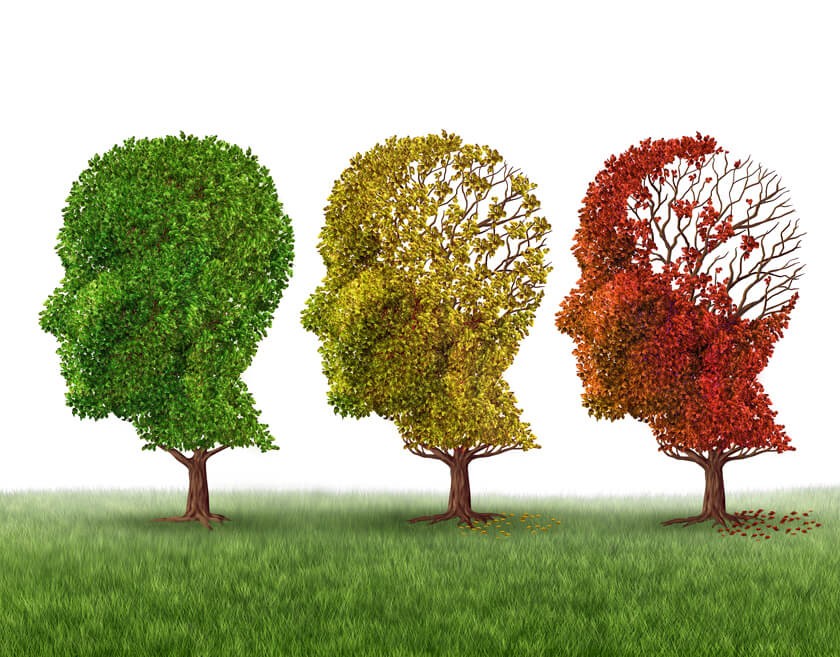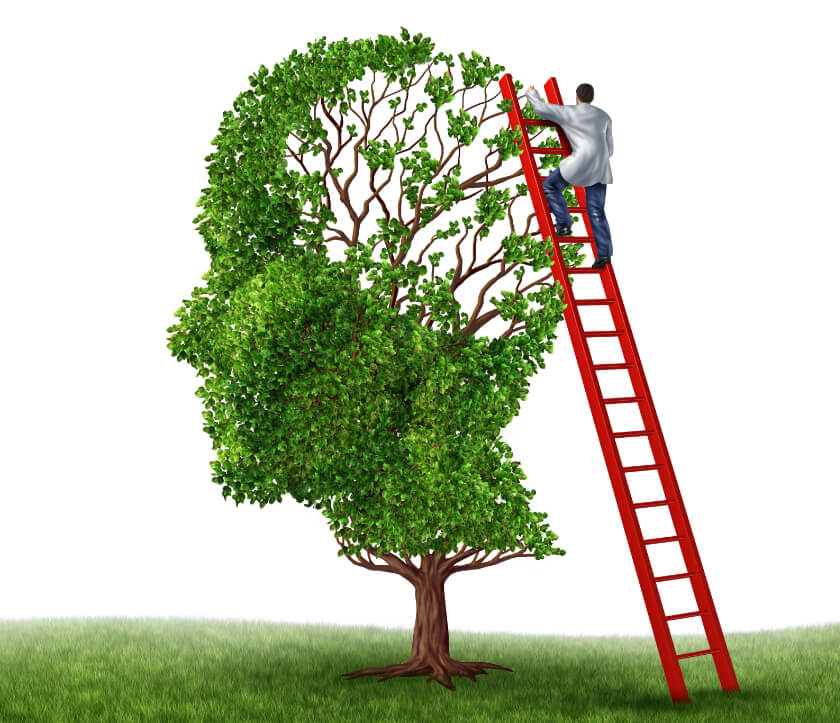
Brain Imaging Provides a Glimpse into Alzheimer’s Disease

June is Alzheimer’s and Brain Awareness Month and Longest Day, an event held by the Alzheimer’s Association. The purpose of the event is to increase public awareness of Alzheimer’s disease, available resources, and information on how people can get involved. The Longest Day takes place from sunrise to sunset on June 21, 2018. Participants engage in a number of fun activities, such as playing sports or games, sharing hobbies, or even having parties, to raise awareness and research funds. The Alzheimer’s Association also encourages individuals to wear purple on June 20, 2018, or deck out their workplaces in purple on that date.
Alzheimer’s disease is the most common type of dementia, which is a general term for the progressive loss of memory, intellectual abilities and important mental functions. About 5.7 million people in the United States have Alzheimer’s, according to the Alzheimer’s Association. Approximately 5.5 million people age 65 and older have the disease and about 200,000 individuals younger than 65 have younger-onset Alzheimer’s disease.
The most common types of dementia usually start with shrinkage of tissue in specific parts of the brain. That means that each type of dementia causes different symptoms, depending on which part of the brain it affects. As the dementia progresses, it can spread to shrink other parts of the brain to cause symptoms that mimic other types of dementia.
Brain Imaging and Alzheimer’s Disease
Doctors make a clinical diagnosis of Alzheimer’s disease, which means that practitioners rely on medical signs and patients’ reports of symptoms rather than diagnostic tests to diagnose the disease. Physicians do use computed tomography (CT) and magnetic resonance imaging (MRI) to rule out other conditions.
CTs and MRIs are types of structural imaging, which can reveal evidence of strokes, tumors, fluid buildup in the brain, or damage from severe head trauma. These structural imaging tests provide information about the shape, position and volume of brain tissue.
Studies using CT and MRI show that the brains of people with Alzheimer’s disease shrink dramatically as the disease progresses. Shrinkage in specific regions of the brain, such as the hippocampus, may be an early sign of Alzheimer’s disease.
CT scanning produces cross-sectional images of the body using special x-ray equipment and sophisticated computers. CT images help doctors detect and rule out other causes of dementia, such as a brain tumor, stroke or subdural hematoma, which is the pooling of blood between the brain and its outermost layer.
MRIs use powerful magnetic fields, radiofrequency pulses, and computers to produce detailed images of the brain and other organs, tissues, and internal body structures. This type of imaging can detect brain abnormalities associated with mild cognitive impairment. MRIs can even help scientists predict which patients with mild cognitive impairment might eventually develop Alzheimer’s disease.
Brain Changes in Alzheimer’s Patients
MRI scans may be normal in the early stages of Alzheimer’s disease. Alzheimer’s disease often starts in the hippocampus, a part of the brain that plays a role in memory – specifically long-term memory. This type of dementia causes problems with memory, thinking and behavior. The symptoms of Alzheimer’s disease get worse over time to interfere with a person’s ability to perform everyday tasks.
In the later stages of the disease, MRI can show the effects of the disease on other areas of the brain. Specifically, Alzheimer’s disease can cause shrinkage in the temporal and parietal lobes. The temporal lobes are located on either side of the brain, near the temples. They deal with memory, including the recognition of faces and things, and language.
The hippocampus, which is inside the temporal lobes, is associated with the day-to-day experiences known as episodic memory. The outer part of the temporal lobes store general knowledge, known as semantic memory. The left temporal lobe typically deals with facts, names of objects, and the meaning of words. The left temporal lobe is also important to talking and understanding speech. The right temporal lobe usually deals with visual information, and so it plays a central role in recognizing familiar faces and things.
Alzheimer’s disease usually affects hippocampus and the temporal lobes before it affects the amygdala, the part of the brain that deals with emotions. This is why people with Alzheimer’s disease will often recall the emotional aspects of a situation even if they do not remember the factual aspects of the event. In other words, they may respond to a past event according to how they feel rather than responding in a logical fashion.
Alzheimer’s disease is a progressive condition, which means it worsens with time. There is no cure for Alzheimer’s disease, but treatment can reduce symptoms. Imaging helps doctors accurately diagnose the disease, and provide better care to those who have the memory problem.




